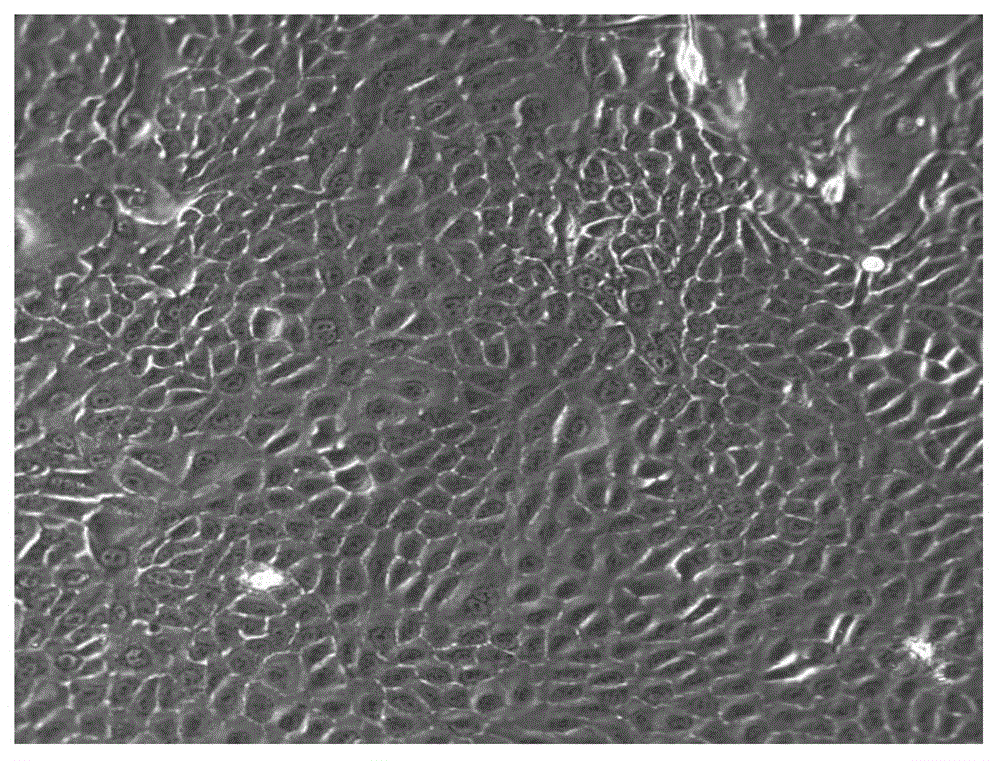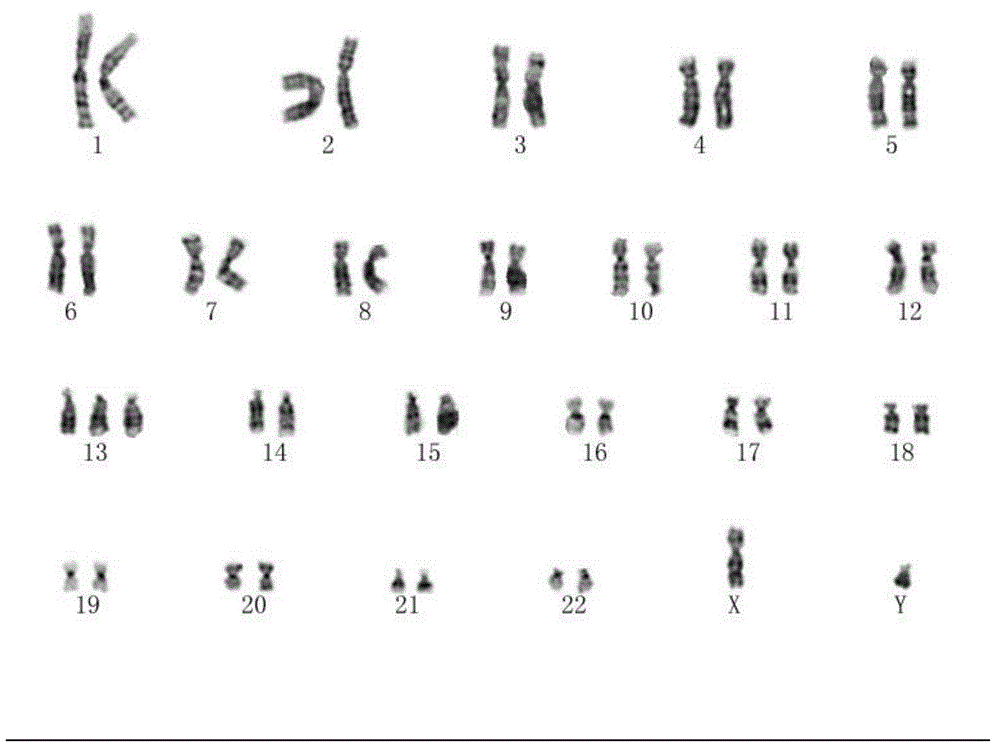Human prostate cancer cell and its primary isolation culture and subculture method and application
A prostate cancer, prostate technology, applied in the field of cell biology, can solve the problems of tumor research and new anti-cancer drug research going astray
- Summary
- Abstract
- Description
- Claims
- Application Information
AI Technical Summary
Problems solved by technology
Method used
Image
Examples
Embodiment 1
[0050] [Example 1] Primary isolation and culture of human prostate cancer cells
[0051] (1) With the informed consent of the patient or the patient's guardian, 1–2 cm prostate cancer tissue was collected from a 57-year-old prostate cancer patient 3 (cubic centimeters), the patient's clinical stage was T3b poorly differentiated adenocarcinoma, and no other treatment was given.
[0052] (2) Preparation of digestive solution: HL medium containing 0.2 mg / mL of collagenase and dispase; among them, HL medium is a mixed medium of DMEM and Ham's F-12 NUTRIENT MIX, and the volume ratio is 3: 1. At the same time add 5% fetal bovine serum, 0.4μg / mL cortisol (hydrocortisone), 5μg / mL insulin (insulin), 8.4ng / mL cholera toxin (cholera toxin), 10ng / mL epidermal growth factor (epithelial growth factor) factor (EGF)), 24 μg / mL adenine, 100 U / mL penicillin and 100 μg / mL streptomycin, 0.25 μg / mL amphotericin B (Fungizone,) 30 μM fasudil (Fasudil).
[0053] (3) Wash the isolated tissue sample...
Embodiment 2
[0062] [Example 2] Subculture of human prostate cancer cells
[0063] (1) When human prostate cancer cells cultured in T25 or T75 culture flasks proliferate to 70-90% abundance, wash the cells twice with 1×PBS (0.01M, pH7.4), and then wash with 0.05% ( Mass volume ratio) trypsin-EDTA digest monolayer cells for 2-5 minutes.
[0064] (2) Add 10mL of complete DMEM to neutralize the digestion reaction for 1-2 minutes.
[0065] (3) Centrifuge at 1000rmp for 5 minutes, remove the supernatant, resuspend the cell pellet and inoculate in 10mL HL medium.
[0066] (4) If necessary, 1×10 6 Human prostate cancer cells were resuspended in 1-2 mL of cell freezing solution (90% fetal bovine serum and 10% DMSO, v / v), and stored in liquid nitrogen for later use.
[0067] Subculture human prostate cancer cells according to the above method, and the cell proliferation doubling curve of the culture line is as follows: figure 2 , continuously subcultured for 90 days, and the number of culture ...
Embodiment 3
[0068] [Example 3] Karyotype analysis and identification of human prostate cancer cells
[0069] (1) When human prostate cancer cells (1×10 6 ) in the exponential growth phase, add colchicine at a final concentration of 0.2 μg / mL, and continue culturing for 3.5 hours.
[0070] (2) Repeatedly blow the cells to make them fall off, and centrifuge at 2000rpm for 5 minutes to harvest the cells.
[0071] (3) Discard the supernatant, add 8 mL of 0.075mol / L KCl solution pre-warmed at 37°C, gently blow and beat the cell mass to mix, and place at 37°C for hypotonic treatment for 25 minutes.
[0072] (4) Add 1 mL of freshly prepared fixative (methanol : Glacial acetic acid=3 : 1, v / v), carefully pipette, mix, and centrifuge at 2000rpm for 5 minutes.
[0073] (5) Discard the supernatant, add 8 mL of fixative, pipette to make a cell suspension, and fix at room temperature for 20 minutes.
[0074] (6) Centrifuge at 2000rpm for 5 minutes, discard the supernatant, and repeat the fixati...
PUM
 Login to View More
Login to View More Abstract
Description
Claims
Application Information
 Login to View More
Login to View More - R&D
- Intellectual Property
- Life Sciences
- Materials
- Tech Scout
- Unparalleled Data Quality
- Higher Quality Content
- 60% Fewer Hallucinations
Browse by: Latest US Patents, China's latest patents, Technical Efficacy Thesaurus, Application Domain, Technology Topic, Popular Technical Reports.
© 2025 PatSnap. All rights reserved.Legal|Privacy policy|Modern Slavery Act Transparency Statement|Sitemap|About US| Contact US: help@patsnap.com



